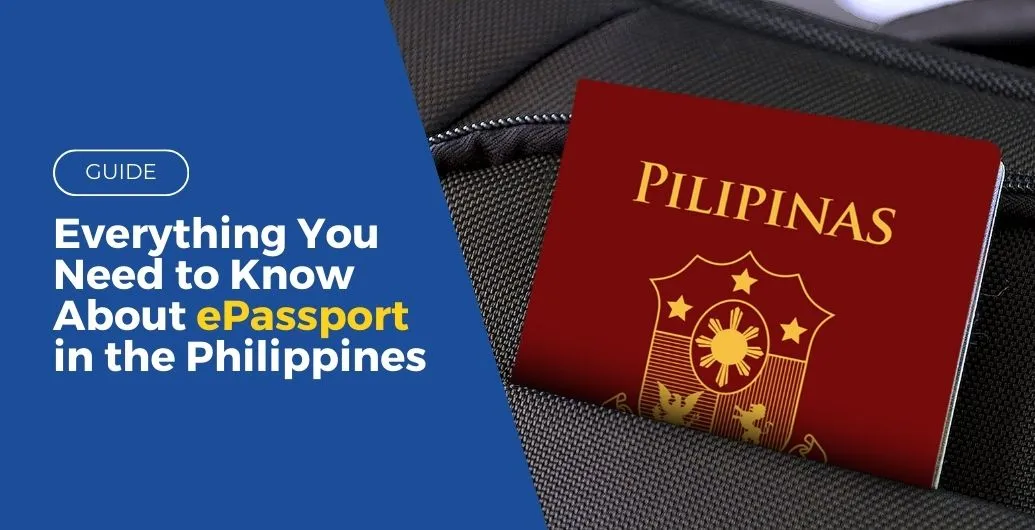Today’s digital advancements have made simplified processes over a number of critical factors and needs. As such, this has changed the way many see and undergo travels abroad. Here is everything you need to know about ePassport uses and their benefits.
Table of contents
What Is An ePassport In The Philippines?
An ePassport, also known as an electronic passport, is exactly similar to their traditional counterparts. They are digitized passports that store the passport’s photograph, fingerprint, iris scan, and other personal data, which are stored inside an embedded microchip. This helps in controlling potential risks such as identity theft and unauthorized risk entry.
What Are The Benefits Of An ePassport?
ePassports offers numerous benefits towards holders in comparison to traditional passports. These includes:
- Stored Data On Chips: ePassport’s most significant feature is its ability to store the passport holder’s crucial information on a chip embedded within the latest passport. The chip stores necessary personal data and biometric information for easier tracking.
- Integrated Photo: ePassports also comes with an integrated photograph of the passport holder. This improves the accuracy of identity verification, improves authenticity, and minimizes fraudulent activities.
- Improved Security Features: ePassports also incorporate over and hidden security features that offer immunity to counterfeiting and unauthorized use. Overt features include watermarks and hidden measures include encryption features.
How do I Apply for an ePassport?
Applying for an ePassport revolves around a straightforward procedure comprising fulfilling specific requirements, adhering to essential steps, and comprehending related expenses.
Also Read: GUIDE: How to Schedule DFA Online Passport Appointment in the Philippines
Requirements for ePassport Application
- Confirmed Online Appointment + Personal Appearance
- Accomplished New Regular Passport Application Form.
- Original and photocopy of PSA, Birth Certificate, or Report of Birth (This should be issued by the appropriate Philippine Embassy / Consulate).
- Original and photocopy of PSA Marriage Certificate or Report of Marriage (For Married Females).
- Current Passport with photocopy of data page.
- Original copy and 1 photocopy of proof of current Philippine citizenship. (e.g. Green card, Notice of Action, Work permit, or dual IC).
- Valid IDs with 1 photocopy. (Check out the full list of acceptable IDs).
Also Read: LIST: Philippine Passport Requirements
Steps to Apply for an ePassport
- Set an appointment online by visiting the DFA Online Passport Appointment System website. Under this steps, other pointers includes:
- Read the Terms and Conditions.
- Choose between the options of either Individual or Group Appointment.
- Choose a DFA Office/Branch and select a preferred date and time.
- Fill in the ePassport application form. This form will be provided after you have received an appointment slot.
- Pay the passport processing fee.
- Be prepared and ready at your chosen appointment date and location.
The total cost of fees can vary upon the following selections.
| Office Locations | Regular Price | Expedite Price |
| Aseana and Consular Offices (Within Metro Manila) | Php 950.00(12 Days) | Php 1,200.00(6 Days) |
| Consular Offices (Outside Metro Manila) | Php 950.00(12 Days) | Php 1,200.00(6 Days) |
| Foreign Services Posts | $60.00(28-60 Days) | |
When did ePassport started in the Philippines?
The first ePassport was officially issued in August 2009. This system has replaced the older machine-readable passport system (or the MRP system). The introduced electronic features mainly enhance security and ease within travels.What is the difference between ePassport and non ePassport Philippines?
Both ePassport vs non-ePassport are often seen as one of the same, however, there are several differences. Traditional passports lack the electronic chip. In comparison to ePassports, non-ePassports solely rely on physical identification.
- Physical Characteristics of an ePassport: ePassport has a logo on the front cover indicating the digital chip.
- Physical Characteristics of a Non-ePassport: Traditional passports lack the logo.
How do I know if I have an ePassport?
To verify your possession of an ePassport, check for a rectangular symbol on the front cover. This symbol resembles a chip or camera and signifies the presence of electronic features. It is standard on all newly issued Philippine ePassports.
Final Thoughts
In summary, the ePassport revolutionizes international travel, offering several enduring advantages. Its embedded chip efficiently stores crucial data, enhancing tracking and identification procedures. This leads to enhanced security, effectively preventing unauthorized copying and use.
Keep Reading: GUIDE: How to Get a Digitized BIR TIN ID for Existing TIN Holders



Leave a Reply